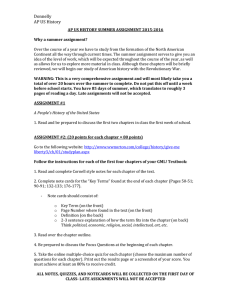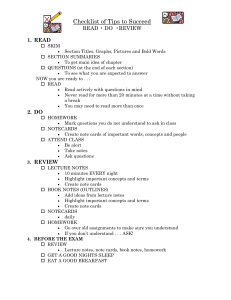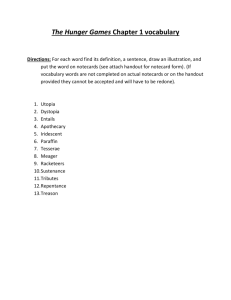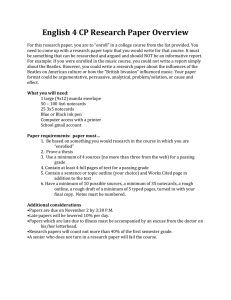1. The period in history during AGRICULTURAL REVOLUTION
advertisement
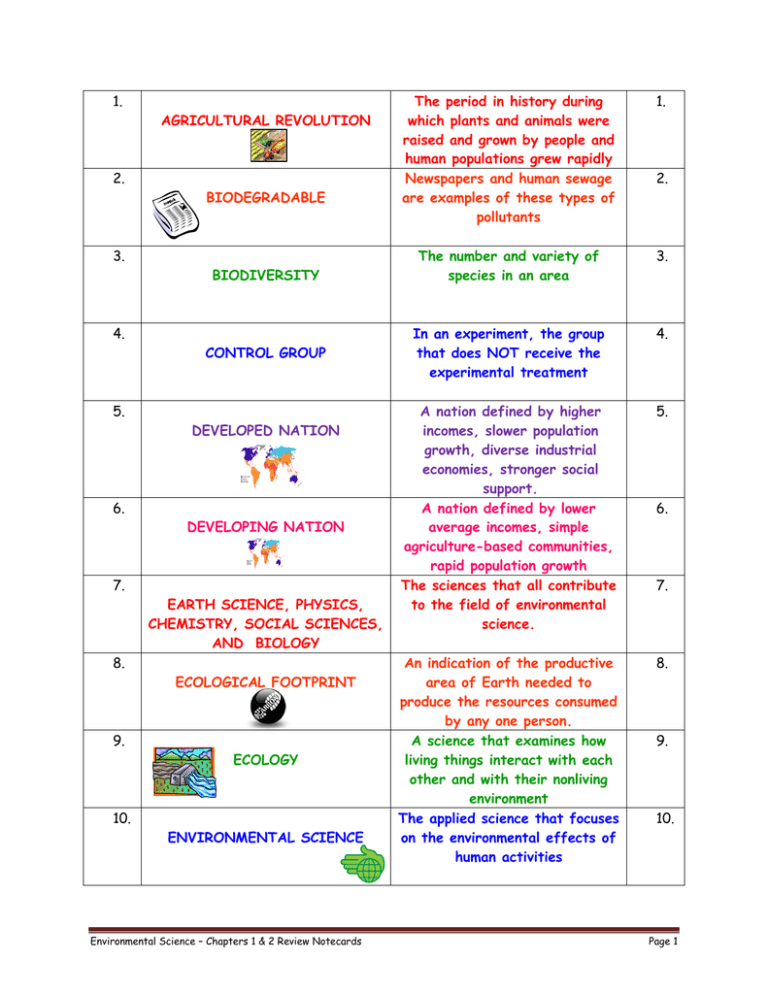
1. 2. 3. 4. 5. 6. 7. 8. AGRICULTURAL REVOLUTION BIODEGRADABLE BIODIVERSITY CONTROL GROUP DEVELOPED NATION DEVELOPING NATION EARTH SCIENCE, PHYSICS, CHEMISTRY, SOCIAL SCIENCES, AND BIOLOGY ECOLOGICAL FOOTPRINT 9. ECOLOGY 10. ENVIRONMENTAL SCIENCE Environmental Science – Chapters 1 & 2 Review Notecards The period in history during which plants and animals were raised and grown by people and human populations grew rapidly Newspapers and human sewage are examples of these types of pollutants 1. The number and variety of species in an area 3. In an experiment, the group that does NOT receive the experimental treatment 4. A nation defined by higher incomes, slower population growth, diverse industrial economies, stronger social support. A nation defined by lower average incomes, simple agriculture-based communities, rapid population growth The sciences that all contribute to the field of environmental science. 5. An indication of the productive area of Earth needed to produce the resources consumed by any one person. A science that examines how living things interact with each other and with their nonliving environment The applied science that focuses on the environmental effects of human activities 8. 2. 6. 7. 9. 10. Page 1 11. 12. 13. 14. 15. 16. 17. 18. EXPERIMENT EXPERIMENTAL GROUP EXPERIMENTAL (SCIENTIFIC) METHOD HUNTER-GATHERER HYPOTHESIS INDUSTRIAL REVOLUTION LOSS OF BIODIVERSITY, POLLUTION, RESOURCE DEPLETION NONBIODEGRADABLE 19. NONRENEWABLE RESOURCE 20. OBSERVATION Environmental Science – Chapters 1 & 2 Review Notecards The procedure used by scientists to test a hypothesis 11. In an experiment, the group that receives the experimental treatment 12. A series of steps used by scientists to identify and answer questions 13. The period in history during which humans lived in tribes and used fires to maintain prairie habitat and hunt buffalo A testable explanation for an observation; written in the “If…, then…” format. 14. The period in history during which great technological strides were made, but pollution first became a significant environmental problem The three major categories of environmental problems 16. A harmful material that cannot be broken down by natural processes; known as a type of pollutant Coal, Oil, Minerals, Metals, Natural Gas, Copper Ore, Petroleum, Diamonds 18. Information gathered by using the senses 20. 15. 17. 19. Page 2 21. 22. 23. 24. 25. 26. 27. 28. The introduction of harmful levels of chemicals or wastes into the environment is called 21. QUANTITATIVE DATA Numeric information; what may be gathered in an experiment 22. RENEWABLE RESOURCE DEFINITION A natural material that can be replaced relatively quickly by natural processes 23. POLLUTION RENEWABLE RESOURCE EXAMPLES Wood, Air, Water, Sun, Soil 24. SKEPTICISM A habit of mind of a scientist, when they do not believe everything they are told 25. SUPPLY AND DEMAND The law that states the price of something is directly related to the rate of its production 26. SUSTAINABILITY When a society can maintain a high standard of living without depleting available resources 27. States the environmental conflicts that occur when many people in a community take advantage of the same natural resources in an area 28. THE TRAGEDY OF THE COMMONS Environmental Science – Chapters 1 & 2 Review Notecards Page 3

